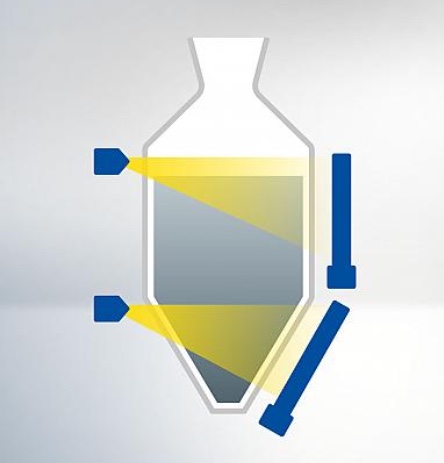Nov-2021
FCC petrochemicals production at minimum capex
Adapting FCC gas concentration unit design using dividing wall technology delivers high purity petrochemicals at significantly lower capital cost.
GARY R. MARTIN
Sulzer GTC Technology
Viewed : 4609
Article Summary
Various market drivers are influencing refiners to evaluate economical methods for shifting fuels production to petrochemicals/chemicals, reducing energy consumption and carbon emissions to provide a lower carbon footprint, and having less impact on the environment. FCC units have the flexibility to process feedstocks at varying severities to optimise profitability and shift the product slate toward petrochemicals. One way to do this is to maximise propylene production from FCC units. However, for existing processing units, achieving the shift in yields requires an economical means of retooling existing assets. Dividing wall column (DWC) technology is a technique providing a much lower capex revamp to overcome light ends recovery section limitations and provide for a more environmentally friendly design.
Increased propylene production
FCC units in the past primarily produced high-octane gasoline from vacuum gasoil. Modern FCC units provide an important link between a fuel refinery and the production of light olefins and aromatics for petrochemical use. FCC licensors are designing units to produce 10-20 wt%, on fresh feed, propylene yield from the more historically typical 5 wt%. Realistically, economics are driving the designs to the lower end of this range, with optimum designs usually somewhere between 10-15% and for revamps more commonly between 7-10 wt%. Economic factors influence optimum propylene production with one factor being the capex associated with recovering propylene.
Revamps of older FCC units can provide for increased propylene production at the expense of gasoline, but a constraint to increase production is the reuse of existing equipment to minimise capex. Increasing FCC severity, addition of ZSM-5 and varying the reactor partial pressure, total pressure, and catalyst-to-oil ratio enable increasing propylene production but this can have a significant effect on the gas concentration section (Gascon).
A simplified process flow diagram of a common conventional FCC unit Gascon configuration is shown in Figure 1. Variations of this flow scheme have been used but most Gascons are based on a similar configuration. The shift in additional propylene production tends to produce more dry gas, making it more difficult to recover propylene. Maintaining high propylene recovery along with the shift in product slate can lead to much higher loadings in the sponge absorber, primary absorber, deethaniser, debutaniser, and the C3/C4 splitter. These columns are often shell limited, and it is normally uneconomical to replace or parallel these five columns by conventional means. While shifting the product slate to petrochemicals makes sense for the forward looking refiner, it must also make economic sense for today’s business.
FCC unit Gascon revamp
There is much published regarding modification of the reactor section design and operation to achieve reactor yields with increased product slate for petrochemicals production.1,2 However, the shift in the product slate’s influence on existing FCC unit assets makes developing a project with a good ROI difficult. Lower capex means of retooling the assets is needed. FCC technology to improve operating margins (product revenues minus feedstock costs) from increased petrochemicals production is difficult to justify if the capex for the revamp is so high that the payback period is unacceptably long. The licensed technologies have shown how the reactor section design/operation can be modified to increase petrochemicals production; however, the technologies do not provide the technological improvements in other areas of the FCC unit which are needed as an economical means of retooling the process with a revamp that results in a good ROI.
There have been advancements in the modification of FCC unit main fractionators that enable higher throughput and a shift in yield structure.3,4 However, the shift to propylene production has a large influence on the FCC unit Gascon. High capacity trays have enabled some capacity gain in the Gascon, but this gain is inadequate to handle a significant increase in propylene production.
DWC technology provides a lower capex, more simplified construction, and lower plot space revamp design. As Figure 1 shows, the typical conventional design utilises six separate columns, although some Gascons have been designed with the primary absorber stacked on top of the deethaniser. This has the benefit of eliminating an additional foundation and bottoms pump as well as reducing the plot space required. Increasing reactor severity and addition of ZSM-5, along with additional operational changes in the reactor section, cracks gasoline range components into additional olefins. These changes can be utilised to increase propylene production and alkylation unit feedstock.
A modern refinery’s overall shifting of refinery fuels production to petrochemicals/chemicals involves removal of high-octane gasoline components, primarily aromatics, from the gasoline pool. Thus, an increase in alkylation unit feed and a corresponding increase in gasoline pool octane from the higher octane alkylate is a benefit in meeting future demands for high compression engines. This increase in olefins also has the potential for additional future petrochemicals demands.
While these changes result in lower gasoline yield, increased production of lower molecular weight components requires the Gascon to be capable of processing the feed while maintaining high recoveries and desired product purities. As dry gas production increases with increased operating severity, this loads up the sponge absorber, primary absorber, and deethaniser. Higher propylene production primarily increases the loads to the primary absorber, deethaniser, top of the debutaniser, and C3/C4 splitter. If these existing columns are shell limited, a lower cost design option is needed to provide a revamp that produces a good ROI.
Sponsor:
Add your rating:
Current Rating: 4

















